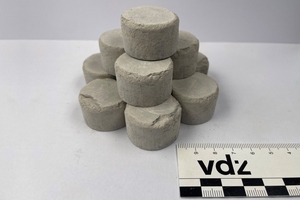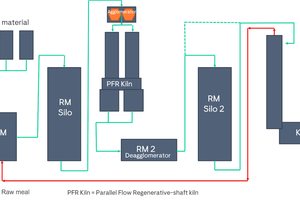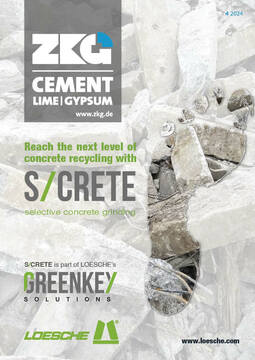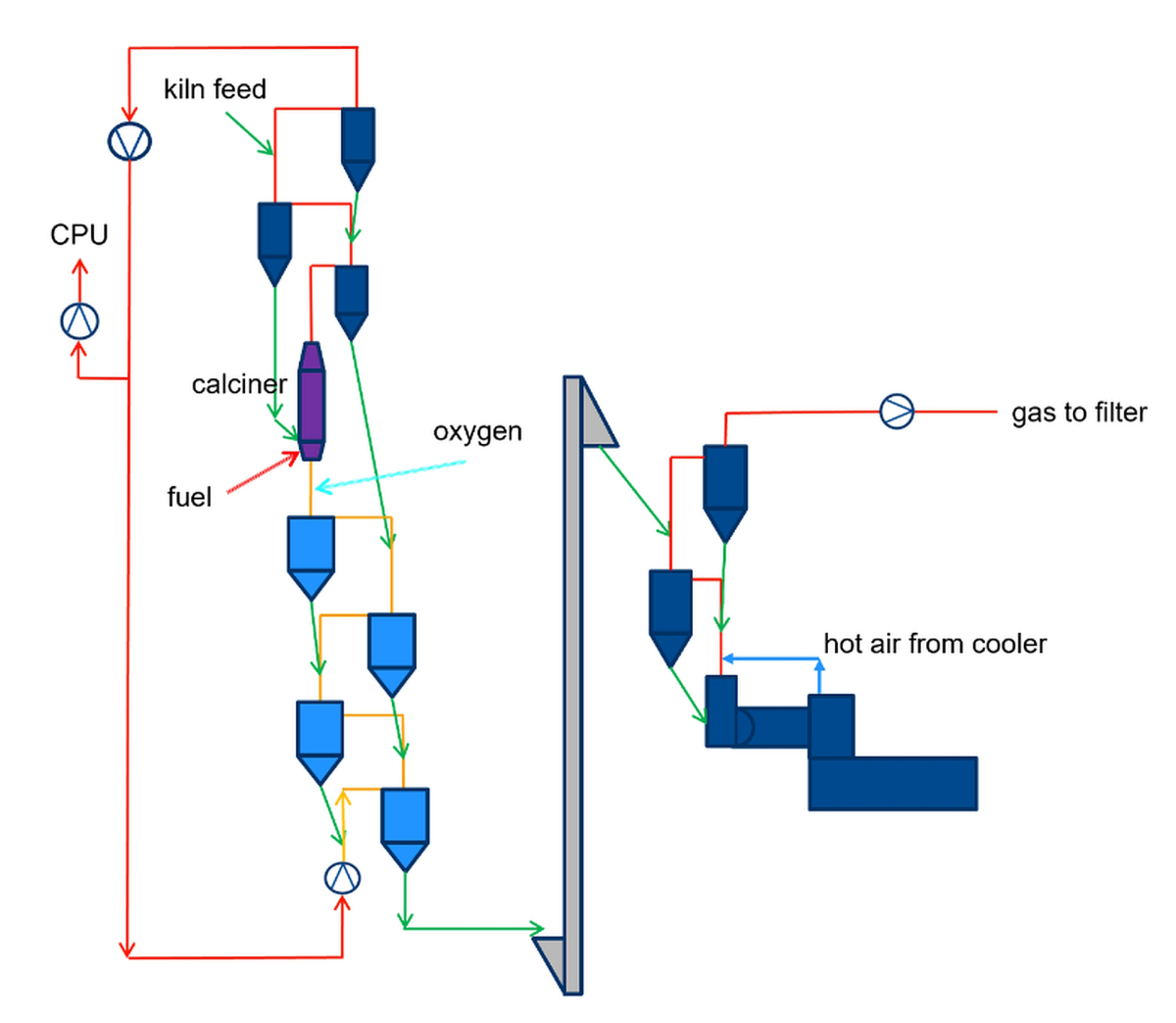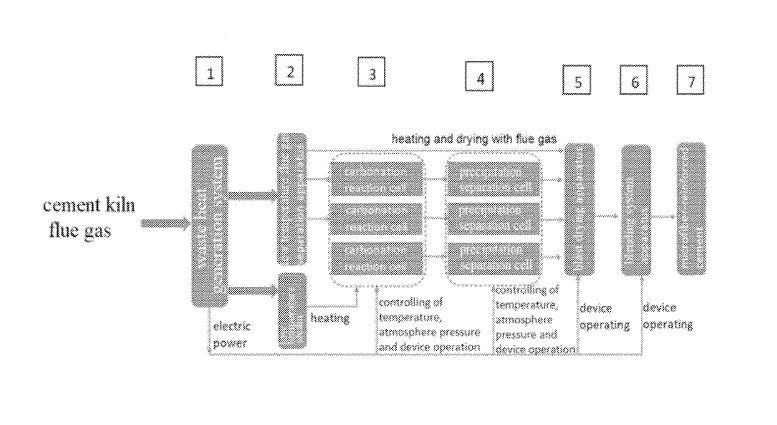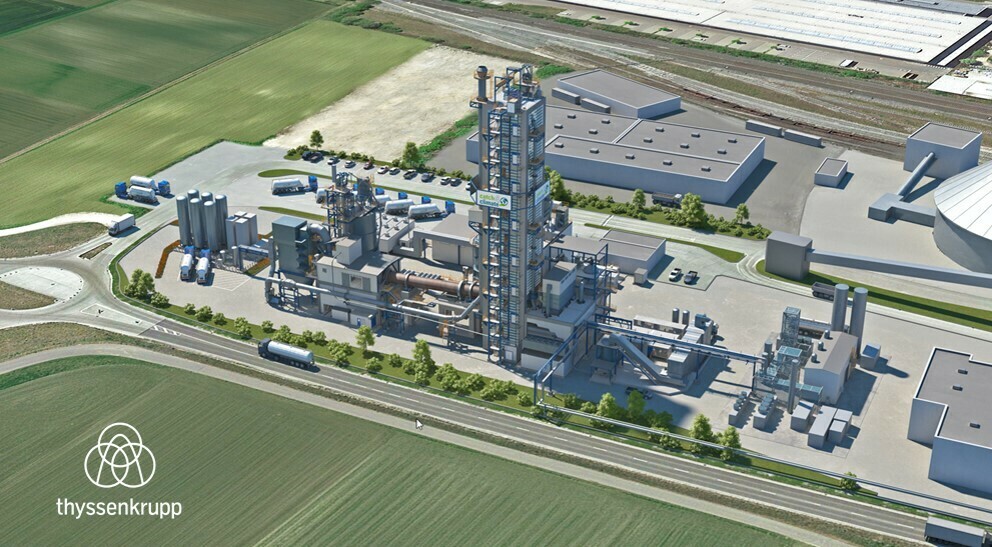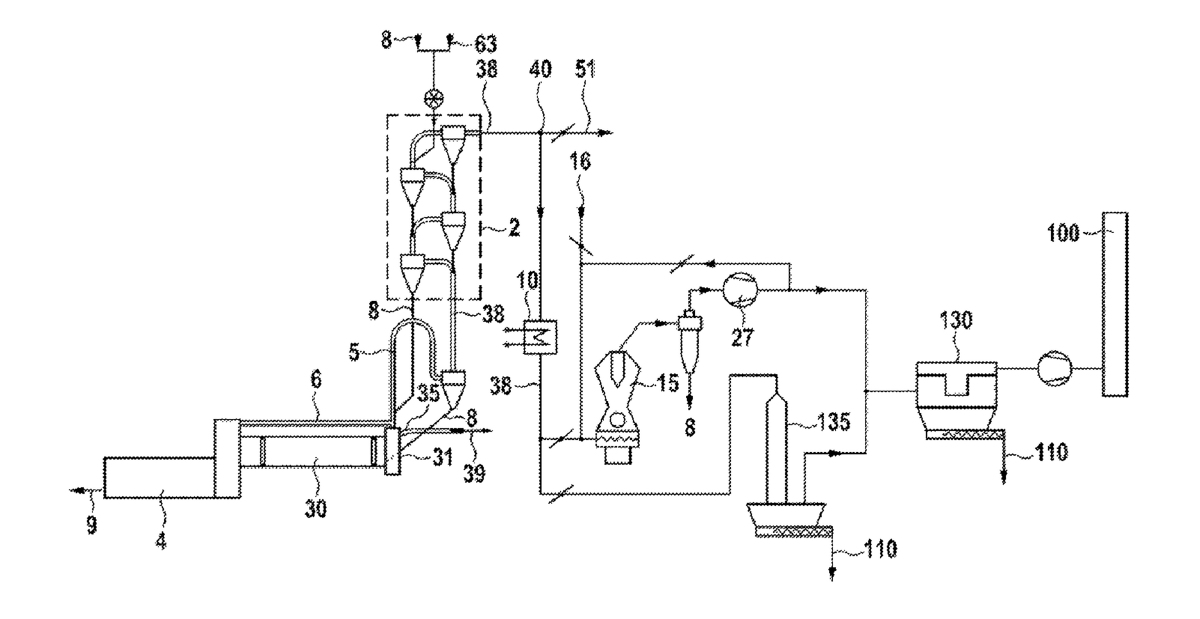Shaft kiln for calcining raw meal for clinker production in the cement industry
The capture of CO2 and its subsequent use and storage are essential elements of the cement industry‘s decarbonisation strategy. The capture of CO2 from the flue gas is energy-intensive and complex. It can be carried out more easily and efficiently by maximising the CO2 concentration in the flue gas. The separation of the calcination of the limestone in the raw meal from the burning process to produce clinker phases simplifies the accumulation of CO2 in the flue gas significantly.
An efficient technology for concentrating CO2 in
the flue gas
The pre-heating and calcination of briquetted raw meal (Figure 1) in a shaft kiln that is operated with the oxyfuel technology offer a promising possibility to significantly increase the CO₂ concentration in the flue gas compared to classical rotary kiln systems. Raw meal, which can contain up to 5% water, is compacted at app. 300 N/mm² and formed into briquettes.
A modern Parallel Flow Regenerative-shaft kiln (PFR kiln) consists of two connected shafts which operate alternately as burning shaft or as regenerative shaft (Figure 2). They are connected with a duct. In the burning shaft, process gases and kiln feed move downward in co-current flow. In the regenerative shaft the kiln feed moves downward and the process gases rise in counter-current flow. In the shaft kiln the limestone (CaCO₃) in the raw meal is decomposed into the gaseous carbon dioxide (CO₂) and the solid calcium oxide (CaO) at temperatures between 850 and 1200 °C. Both shafts change their flow direction in regular periods of about 10 - 15 minutes. As a result, an extremely high thermal efficiency of over 80% can be achieved. For the use in the shaft kiln the kiln feed material (raw meal) is briquetted. This ensures the flow of process and cooling gases through the material.
In oxyfuel operation, almost pure oxygen is used instead of air as oxidant in the PFR kiln. The elimination of nitrogen from oxidizing agent air to oxygen results in a reduction of the amount of kiln flue gas, while increasing the CO2 concentration of the kiln flue gas. In conventional rotary kiln operation with air, the CO₂ concentration is around 25% by volume. The oxyfuel-operated shaft kiln with CO₂ recirculation can achieve concentrations of over 90 to 95% by volume. The shaft kiln operates with overpressure. This way, the entry of false air and, as a consequence, undesirable amounts of nitrogen in the system can be avoided. This is an advantage over conventional preheater/precalciner kilns in terms of the required sealing due to the negative pressure.
Furthermore, a CO₂ barrier layer is formed during operation of the PFR kiln below the crossover duct. It prevents the mixing of cooling gases with combustion gases and thus supports the gas separation in the oxyfuel process.
The clinker phases are then produced in a separate burning process with the material that was already calcined in the PFR kiln. The separate burning process can be carried out in a standard preheater kiln. This kiln can be “fired” then electrically or with hydrogen which results in significantly reduced CO₂ emissions.
www.vdz-online.de/en

